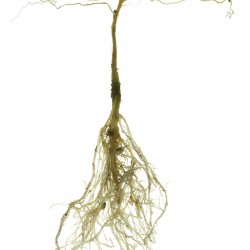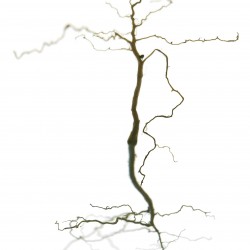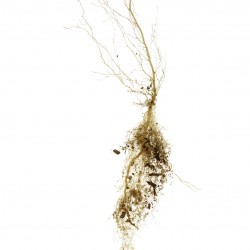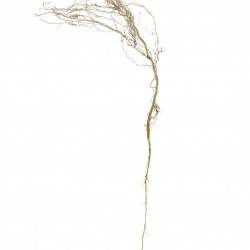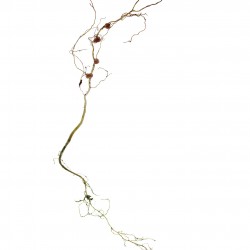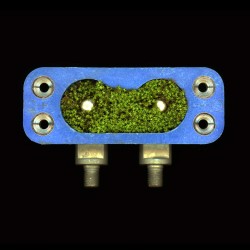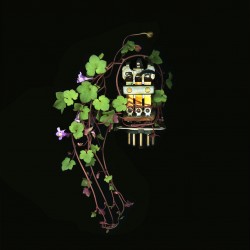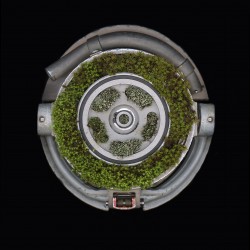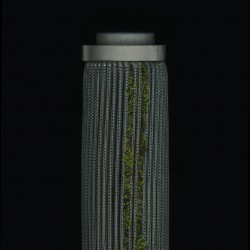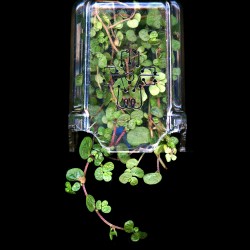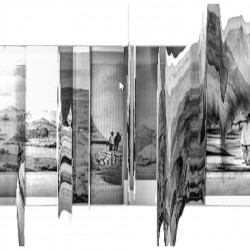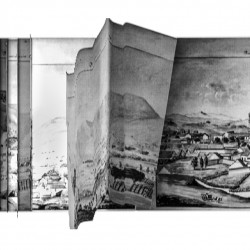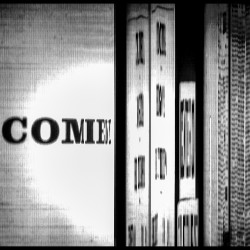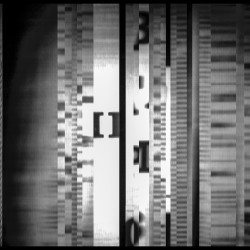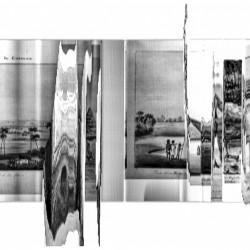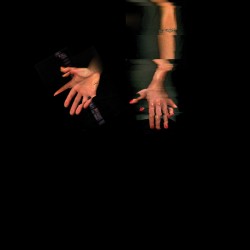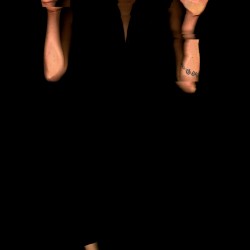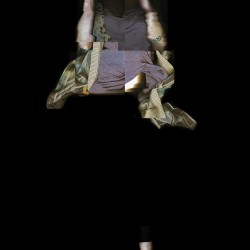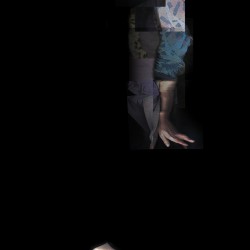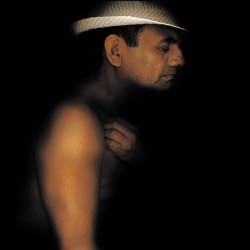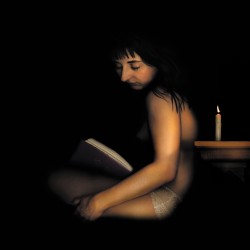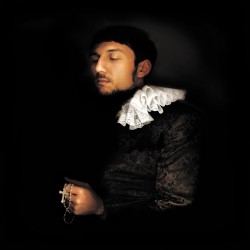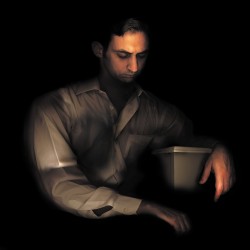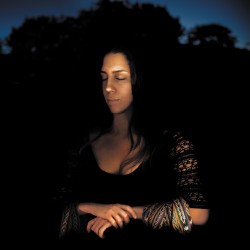Galería MÜ presents 2:Scan, the second exhibition in a three-part series that take on the theme of photographic production in the contemporary world. An exploration of three forms of creation that include 1:Pixel, about digital use or manipulation, 2:Scan, about the use of the scanner in image construction and 3:Grain, about image capture through analog mediums. This series of exhibitions shows the time needed to produce an image, not only from its theoretical side, but also in its formal creation.
All of the photographers presented are artists that use technique as a point of departure for presenting their ideas. But it’s evident that the techniques bring with them certain semiotic references, creating a natural relation that is not coincidental – playing between how we think and how we create.
2:Scan is an exhibition that traverses the border between photography and digital art, using light to capture an image, but using a computer to interpret and build it. Scanning, the action of slowly passing light over an analog object in order to translate it into the digital world, is most associated with converting documents into PDFs or printed photographs into JPGs. It allows us to remove the physical need for paper or other two-dimensional objects while also digitally preserving information. We cherish the basic, daily need of scanners just as we do with cameras – it is simple to use and provides an essential use.
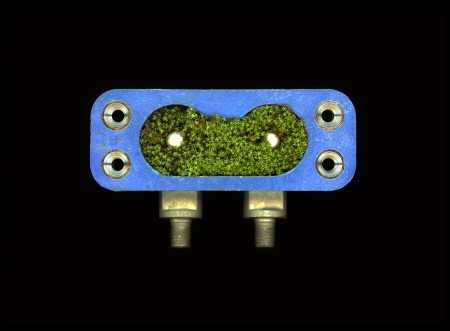
Joyce Rivas, Sub system 6, 2015
The process of scanning is straightforward. A document is placed on the glass surface and the lid is placed on top in order to prevent light from passing through the paper (a sort of darkroom effect). After clicking on “scan” on the computer screen, a signal is sent to the scanner that tells it to slowly pass a bar of light underneath the glass. Adjacent to this bar of light is either a charged coupled device (CCD) or a contact image sensor (CIS) that takes thousands of pictures of the surface of the document, sending the images to the computer, where it connects them together to “copy” the object on the glass surface. This computer file is then saved into an appropriate format and sent off as needed.
Analyzing this process, there are two actions that make it unique to other forms of image capture. The first is proximity and the second is reconstruction. The ideas presented herein do not propose that the scanner be considered a camera, but rather, that a scan be considered a photograph.
Proximity is what naturally defines the scanning process. If a document sits 10cm or more from the glass surface, the sensor cannot focus on it and the light fills a void of space, never reaching the object it is scanning. The result produces a black image, or the lack of light, or more accurately, the lack of an object to reflect the light.
The only historical reference to capturing an image at such a degree of proximity was originally used for sending documentation over long distances. Over 20 years after the invention of photography, in the 1860s, the pantelegraph was invented to electromagnetically scan a metal plate inscribed with information (most commonly a signature) and transferred over telegraph lines. In 1913, the Belinograph, the precursor to the facsimile, scanned images and transferred them over telegraph or phone lines.
For the camera, Macro lenses were made publicly available in the 1950s with the ability to focus on objects at a distance of no less than 4cm. But the ability to transmit detail over larger surface was made available with the invention of the scanner in 1957. It has since advanced dramatically and is now able to capture the grain in a photographic negative or the texture on a single strand of hair.
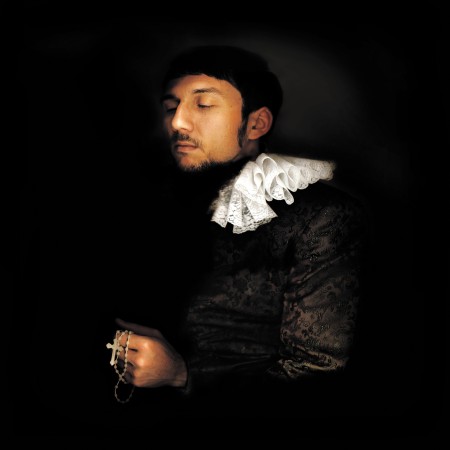
Coco Mártin, Dixit, 2012
The importance of proximity isn’t important because of what can be captured, but rather, the necessity of placing the object being scanned so close to the sensor is what makes it so unique. With a camera, there is a certain distance and timing that is subjective. It requires some sort of relationship between the photographer and the subject. But with the scanner, this relationship is completely objective. The subject is placed in a specific area on the flat surface and the settings to manipulate the quality of the image are minimal, usually relying upon a post-production application to make adjustments. The principal scanner setting allows for the adjustment of the amount of detail that will be captured – defined by pixels, not by light.
The scanner’s objective relationship with its subject has defined its natural state as an archival resource. In the work of the Spaniard, Luis Castelo, the archival nature of his work can be seen in his most recent series, “Malas Hierbas” [Weeds]. His scans maintain a clinically white background and present common weeds with their root systems thoroughly cleaned of debris. Instead of being recognized as a nuisance, the plant above the surface is immediately related to its roots, giving the plant an identity, or life. They become miniature trees, delicate and necessary for nature’s balance.
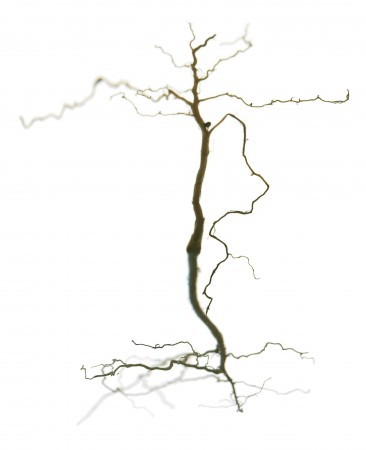
Luis Castelo, Malas hierbas No. 14, 2014
Castelo’s proximity to the plant allows us to investigate it and catalog it. The shape of its crown; the color of its trunk; the size of its roots. However, something beyond the scientific takes place: the form becomes abstracted. As Castelo claims, “taken out of context, they become strange beings that can easily be confused as nervous systems or capillaries from a micro-world. They can also be associated with the macro-world of aerial images of the grooves that rivers have carved in the earth.”
The archival nature of Colombian Joyce Rivas’s work is also evident. Like Castelo, she also uses unnoticed plant life in her scanography, but associates it with an opposing unnoticed material. She collects these plants from Bogotá’s earth and gently organizes them within discarded plane parts found at El Dorado International Airport. At the same time, she catalogs the natural world with the industrial, giving recognition to opposing elements through a scientific and creative process.
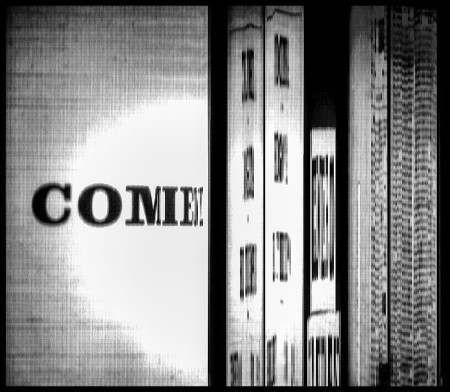
William Aparicio, Codificando Microfilms, 2013
In his series “Pausa Intercrónica”, Colombian William Aparicio has taken a new approach to archiving information. His analysis of newspapers about the Colombian conflict since it began with the Bogotazo on April 9, 1948, becomes a critique on databases and the construction of personal and collective memory. “Books and archives are the sources of an inexhaustible amount of possibilities of recognizing our history and culture.” His “photographs by scanner” are compilations of decades of stories, collected and manipulated into his own vision of Colombia’s modern history. We can make out engravings of colonial figures or severely cropped texts, but the results are decontextualized and abstracted.
Aparicio’s use of the scanner also speaks to the technology itself. As opposed to a camera, a scanner takes a significant amount of time to capture and process its image (though the first cameras often took up to 8 minutes or longer to capture an image). This is why scanner applications for the computer have a “preview” button, which allows the machine to take a quick, low-resolution view of the entire scanning surface area and for you to select the exact area of what you’re going to scan in full resolution. Depending upon the size of what will be scanned and the quality of the scanner, capturing an image could take anywhere from one to ten minutes. However, an image can easily be constructed by adding, turning or removing content while the scanner inches along. In continuation, the collage of imagery can be understood in terms of content, time and performance.
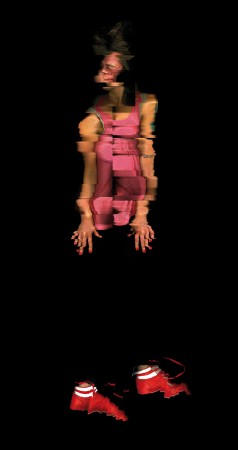
Bárbara Oettinger, Estrategias cotidianas hacía la reconfiguración del cuerpo, 2009
In the work of Chilean artist Bárbara Oettinger, the factors of collage are clearly seen. Due to the limitations of the common scanner (11” x 14” or less), Oettinger had to take multiple scans of the body in order to capture a single “portrait”. This allowed her to construct an identity – one that may not be that of the person, but rather of a person that she wanted to represent. Her series “Everyday strategies towards reconfiguring the body” approaches the way that women are culturally objectified through the media. Instead of producing an image of a beautiful woman, highly photoshopped, she compiles many scans to build a “real” image – exemplifying all the details that come with proximity.
The process of reconstructing an image through many imperfect scans results in a “grotesque and distorted body image, far from any canonical harmony.”
Coco Mártin, from Peru, has approached portraiture in a similar fashion. Though his acceptance is not of the grotesque, but in that of the diffusion of light. He utilizes the scanner to define the quality of light via proximity. Like a classic Renaissance painting, Mártin has reintroduced chiaroscuro through a process that lacks the ability to surround its subject with light – much like in the way that a painting in the 15th century may have been made under candlelight.
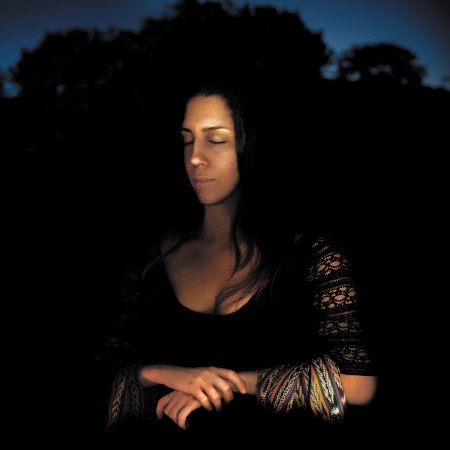
Coco Mártin, Prima Facie, 2012
Beyond the time spent scanning his subjects, Mártin also spent a great deal of time constructing the final image. Unlike Oettinger’s raw scans, his are seamless and planned. The result is an image that can easily be perceived to have been taken by a camera, his subjects squished upon an invisible glass, or perhaps the boundary that separates the photograph from the spectator.
Mártin brings us back to the thesis of this exhibition: the scan as a photograph. As a classic photographer, he has adapted new technology to recognize the multitude of paths that image making takes to achieve its goal. We must accept that photography has evolved with the evolution of technology. The use of Photoshop to edit or even construct an image will continue to define and redefine photography as time goes on. The scanner is not a camera, but has supplanted its function in order to capture an image.
The qualities that prohibit creation using the scanner are exactly what define and praise its process: constructing an image, the time necessary to scan and the proximity of the image sensor. Accepting these prohibitive qualities will allow one to accept this tool as a new form of image creation, falling into the broad field that we call photography.
Andrew Ütt, 2015
Director and Curator, Galería MÜ

